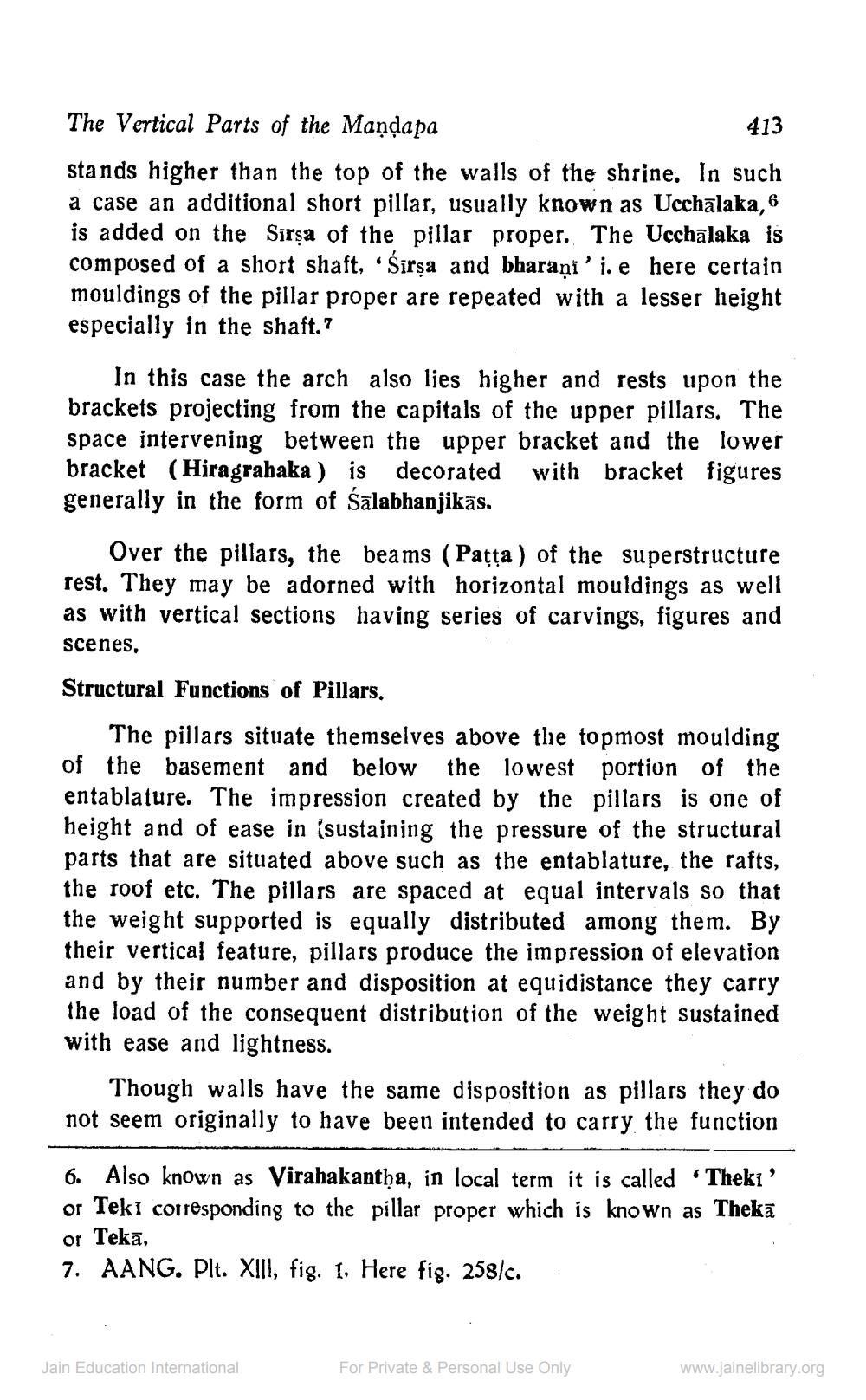________________
The Vertical Parts of the Maņdapa
413 stands higher than the top of the walls of the shrine. In such a case an additional short pillar, usually known as Ucchālaka, 6 is added on the Sirsa of the pillar proper. The Ucchālaka is composed of a short shaft, 'Śirşa and bharaṇi'i.e here certain mouldings of the pillar proper are repeated with a lesser height especially in the shaft.?
In this case the arch also lies higher and rests upon the brackets projecting from the capitals of the upper pillars. The space intervening between the upper bracket and the lower bracket (Hiragrahaka ) is decorated with bracket figures generally in the form of Salabhanjikās.
Over the pillars, the beams (Patta) of the superstructure rest. They may be adorned with horizontal mouldings as well as with vertical sections having series of carvings, figures and scenes,
Structural Functions of Pillars.
The pillars situate themselves above the topmost moulding of the basement and below the lowest portion of the entablature. The impression created by the pillars is one of height and of ease in (sustaining the pressure of the structural parts that are situated above such as the entablature, the rafts, the roof etc. The pillars are spaced at equal intervals so that the weight supported is equally distributed among them. By their vertical feature, pillars produce the impression of elevation and by their number and disposition at equidistance they carry the load of the consequent distribution of the weight sustained with ease and lightness.
Though walls have the same disposition as pillars they do not seem originally to have been intended to carry the function
6. Also known as Virahakantha, in local term it is called “Theki' or Teki corresponding to the pillar proper which is known as Thekā or Tekā, 7. AANG. Plt. XIII, fig. 1, Here fig. 258/c.
Jain Education International
For Private & Personal Use Only
www.jainelibrary.org




